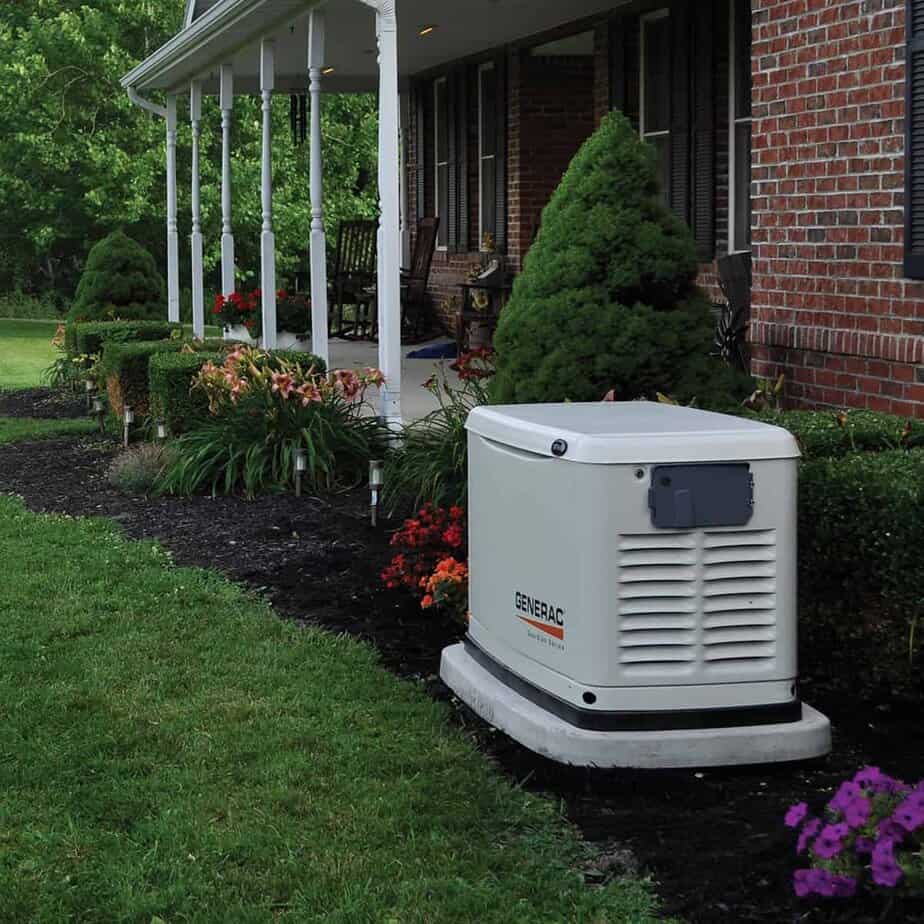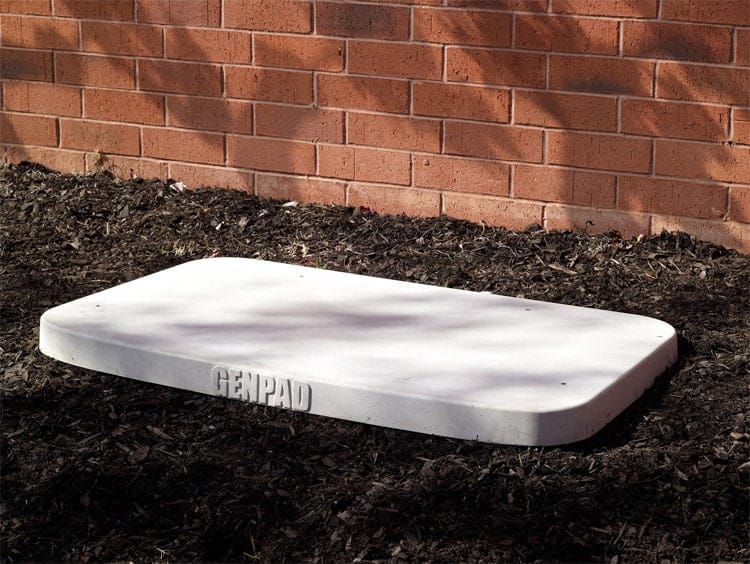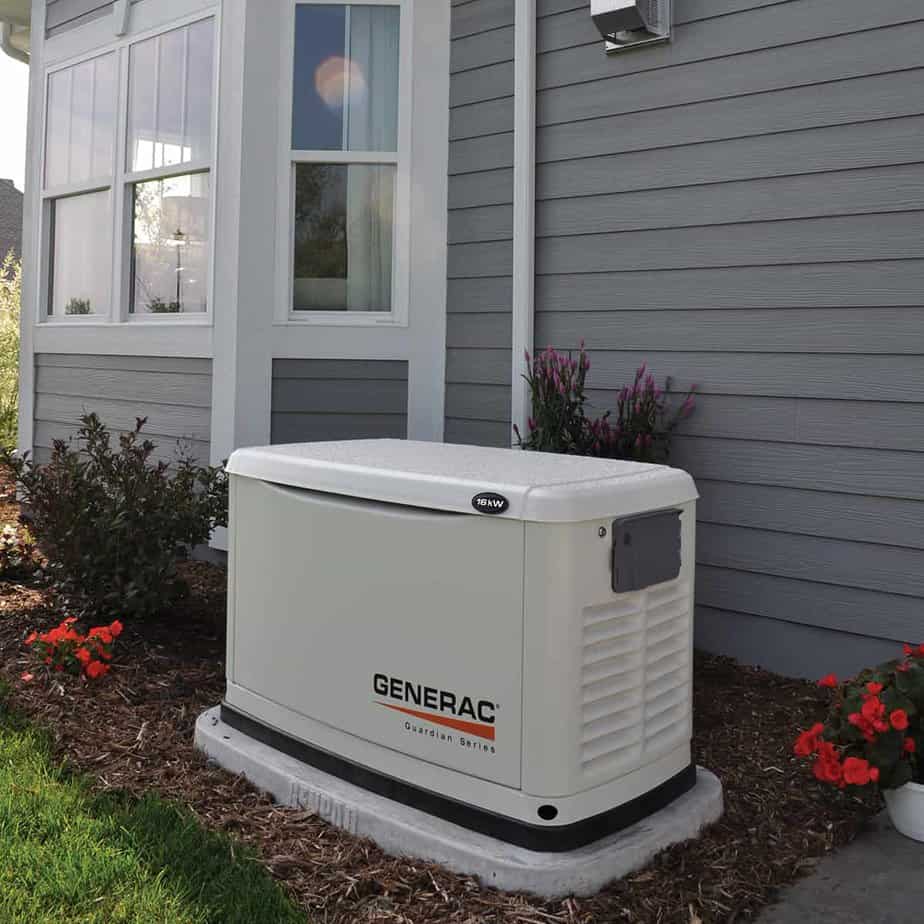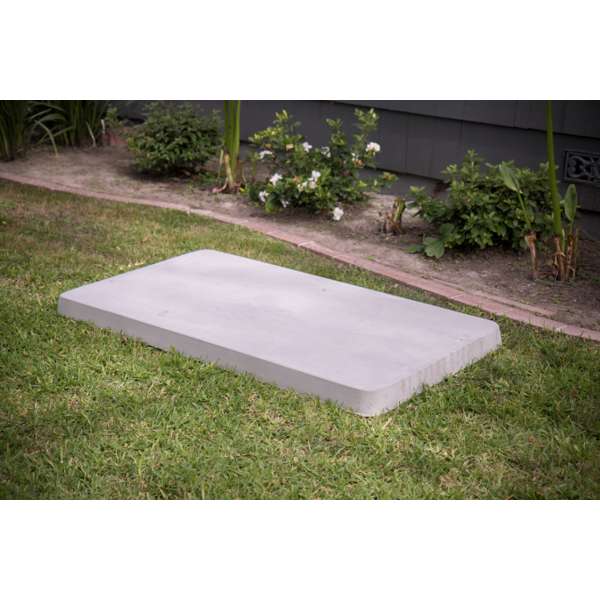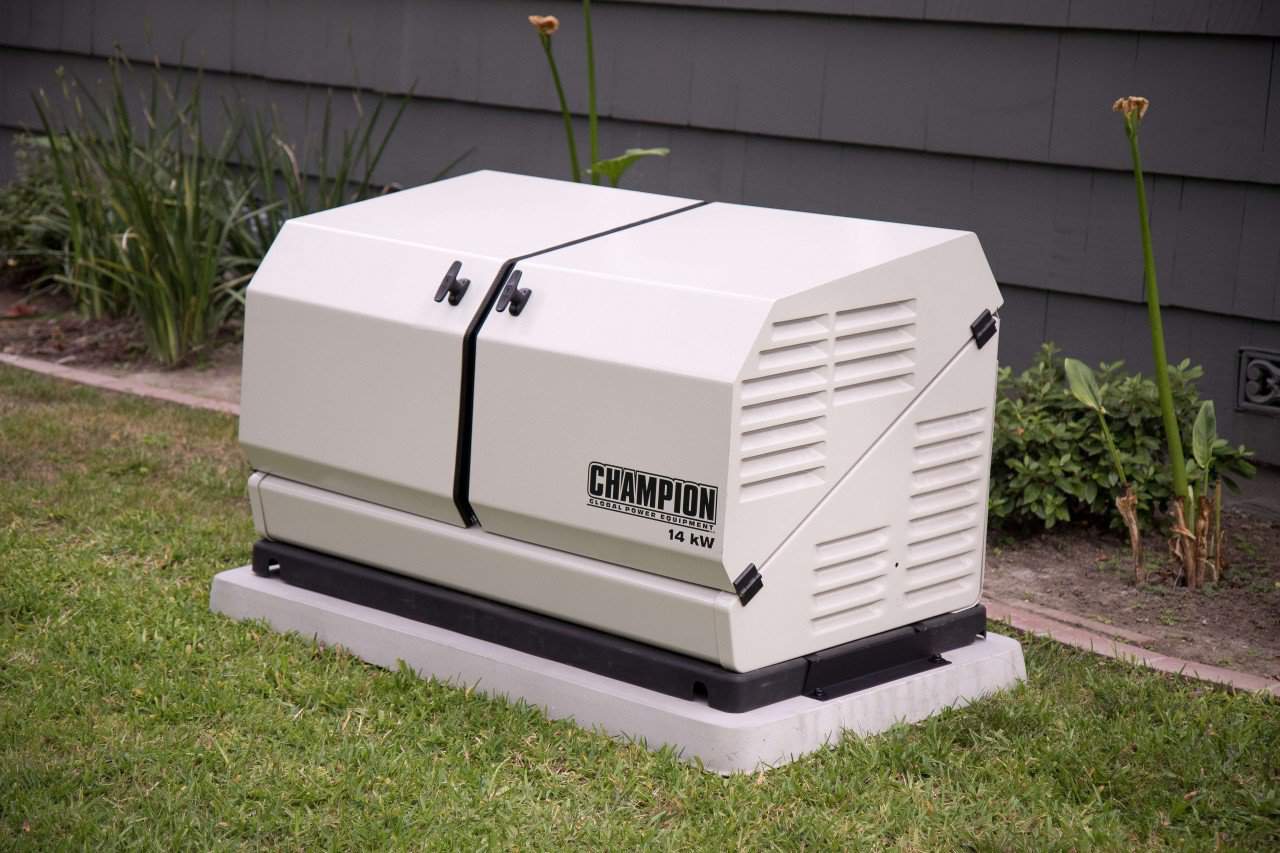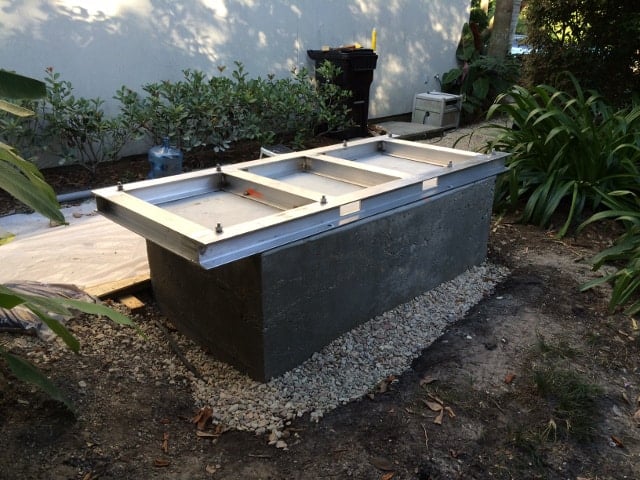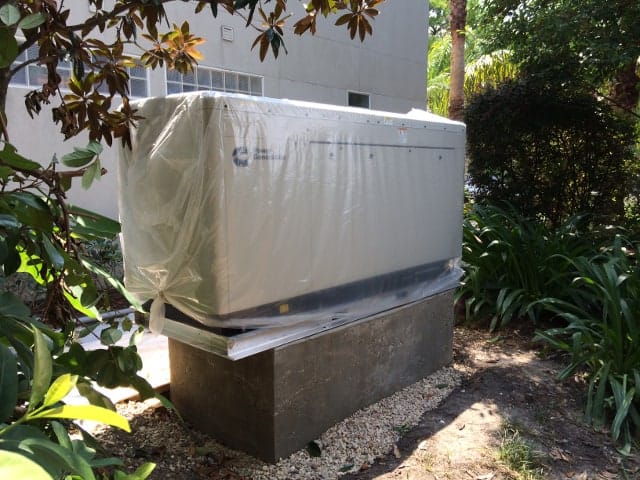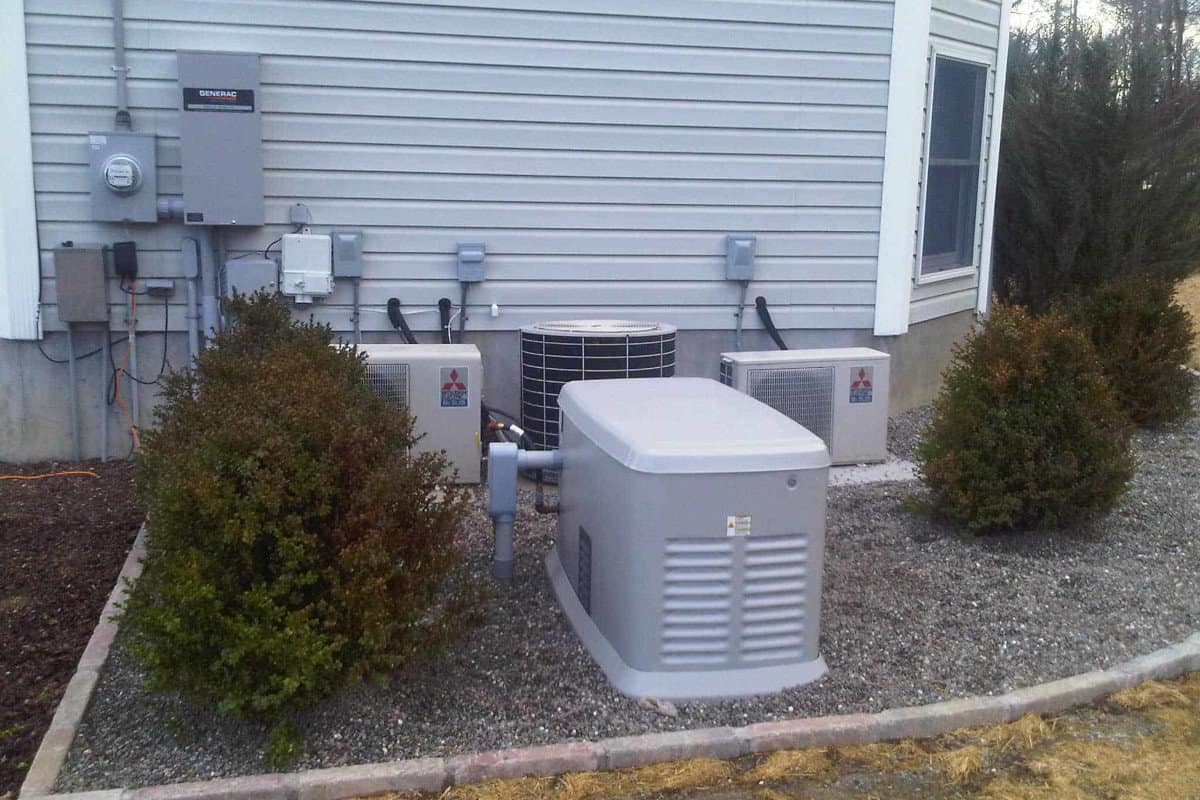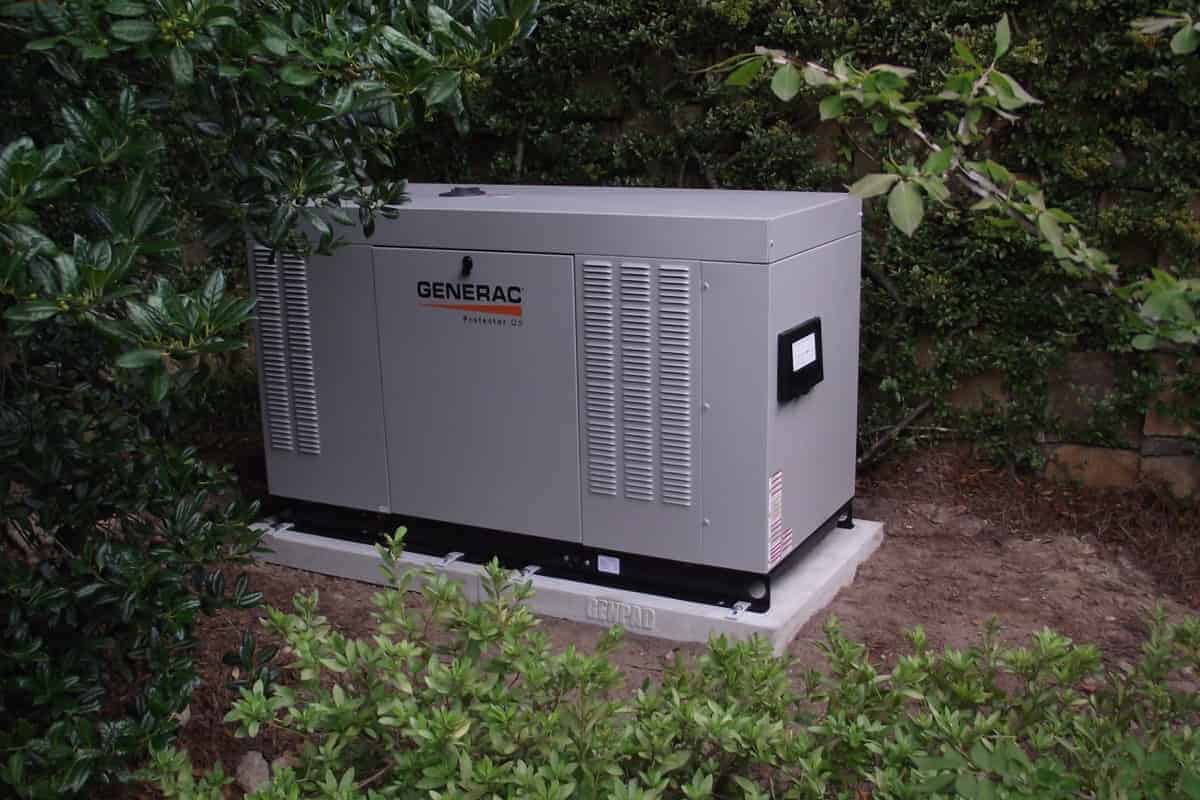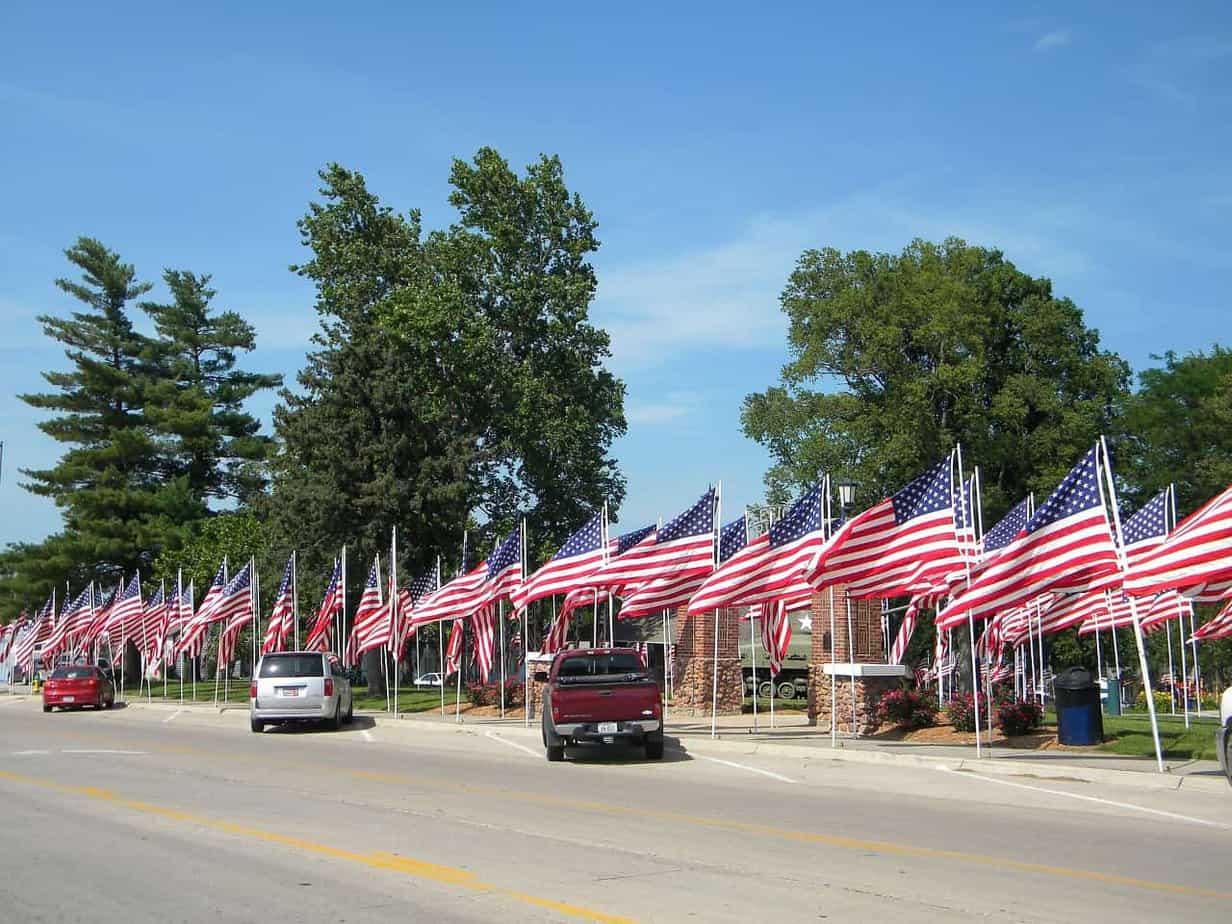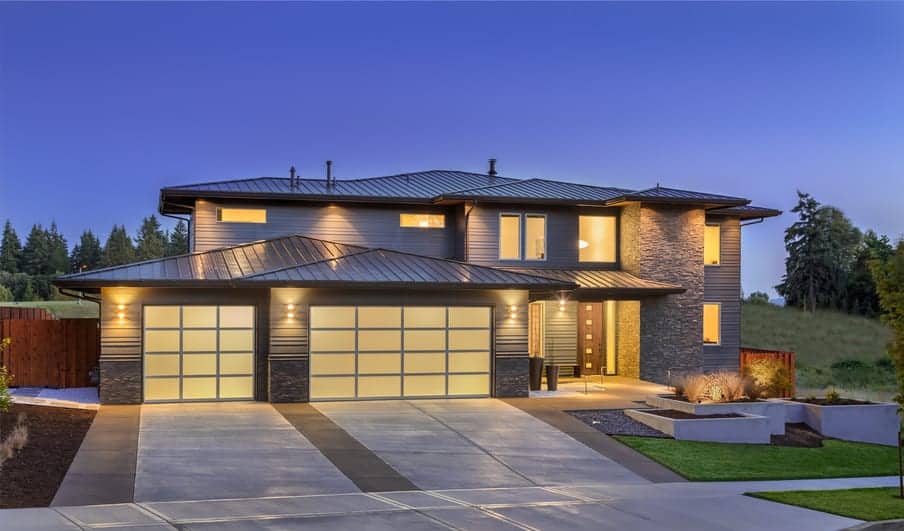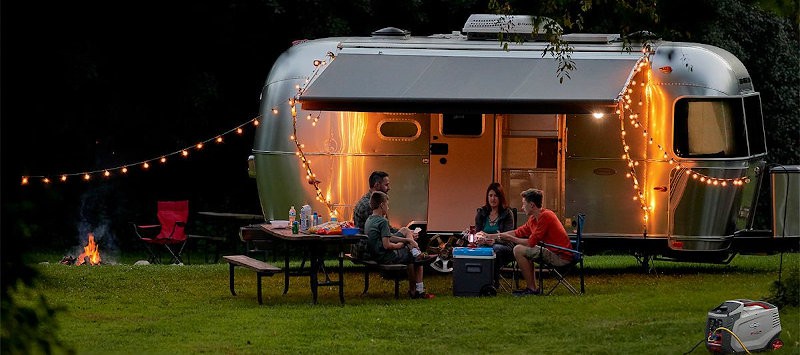A Generac Guardian Generator installed on a precast 3-inch concrete pad suitable for most Generac air-cooled generators.
Installers Use Pre-Cast, Made-On Site, Custom Pedestal, or Compacted Soil Generator Pads
Every Home Standby Generator Installation is different. Access to utilities, ground and soil conditions, the location of windows, doors, and vents, and even the prevailing winds can affect site placement. Generator manufacturers specify the minimum requirements for a generator installation, but “good enough” is not always the best. Following the manufacturer’s minimum requirements may not meet local codes or fit the location.
Always consider your local building codes. The National Electrical Code refers to local codes as AHJ or the Authority Having Jurisdiction. The AHJ always has the final word. If an installation doesn’t comply and the homeowner bypasses the building permit process, it could result in fines or a refusal by the property owner’s insurer to pay a claim against the homeowner.
A home standby generator represents a considerable investment. Finding a good generator installer is just one step in the process. Taking their advice on installation options and following local building codes ensures a stable installation that provides years of service.
PreCast Concrete Pads
Pads made of concrete are poured and cured by the generator manufacturer, the installer, or by a local company that specializes in concrete products. The process is simple. Mixed concrete is poured into a form and allowed to harden. Curing takes up to a week for full strength. Generator pads are often a part of the purchase and ship with the generator to reduce freight costs.
Minimal site preparation includes leveling the soil. Sometimes the standby generator installer removes a rectangular area of grass and soil to add sand and gravel which is then compacted, and the pre-cast concrete pad laid over the top. The installer levels the pad before placing the generator on it. Thickness depends in part on the weight of the generator. Three to four inches thick is common. Very heavy generators may require a poured pad.
Minimize Site Preparation with a Generator Pad
Pre-cast pads reduce installation time over pouring a pad on site and are usually the most cost-effective concrete pad. Upgrading to a pre-cast pad over a compacted soil installation is easy and in most cases worth the additional cost.
Made on Site
A poured concrete foundation becomes a part of the existing soil and is more stable and less likely to sink or move over time. State and local building codes may include requirements for poured concrete pads, including pads for generators. Many communities require them for central air conditioning units and apply similar requirements for home standby generators. In some cases, steel rebar connects the pad to the building foundation. Large, liquid cooled generators require a poured pad, but some smaller models may use a precast concrete pad.
Managing Your Home Standby Generator Installation
The installer removes soil and compacts the excavation. A compacted sand and gravel base provide drainage and a stable surface for the concrete. Wooden sides staked in place create a frame or mold. The installer mixes the concrete and pours it into the frame. They smooth the top with a trowel and texture it. Some installers round the edges with an edging trowel.
The poured concrete pad must cure for several days before the generator can sit on it. Made-on-site pads take time and add to the installation cost, but they offer better stability and the depth is easily adjusted for the generator weight, local conditions, and building codes.
Custom Pedestal
Where flooding is a concern, a raised pedestal protects a home standby generator by keeping it out of the flood water. A generator immersed in flood waters is usually written off as a complete loss. Note that any standby generator installation must provide a way for service technicians to work on the generator. If a pedestal installation is too high with no room to work, the manufacturer or service company can’t properly maintain the unit. All pedestal installations and locations must take this into consideration.
Standby Generator Sizing Guide
Ideally, a concrete foundation anchors the pedestal which is built on top of the foundation. Wooden forms make a mold for the sides. If the pedestal is high enough, the forms create walls of concrete with a hollow interior, sometimes filled with sand or gravel after removing the forms. The generator sits on top of the pedestal where it remains out of the flood water.
Custom pedestals cost more than either pre-cast or made-on-site pads, but they protect the home standby generator from floods.
Compacted Soil or Gravel Bed
The minimal basic installation. Site preparation begins by removing the grass and top layer of soil to a depth of three or four inches. An additional layer of compacted gravel may add stability to the site and provide better drainage. The home standby generator installs on a composite pad that sits directly on the prepared site instead of on concrete.
When allowed and where soil conditions are appropriate, the compacted soil or gravel bed meets the minimum requirements for most air-cooled, home standby generator installations. Over time however, the soil may move which leaves the generator tilted and not flat or level. Regions that receive heavy rain or are subject to flooding are the least suitable for this type of installation. Grass can grow right up to the generator and cause problems with air flow or contribute to debris accumulation.
Homesites with stable soil and proper grading that won’t flood during heavy rains or during a spring thaw make a good site for this type of installation provided the AHJ allows it. Sometimes however, installers won’t take a chance. The potential for problems is greater and the cost difference isn’t worth it to take a chance that something will go wrong.
Compacted soil or gravel beds are the least expensive option and are perfectly adequate in some areas.

